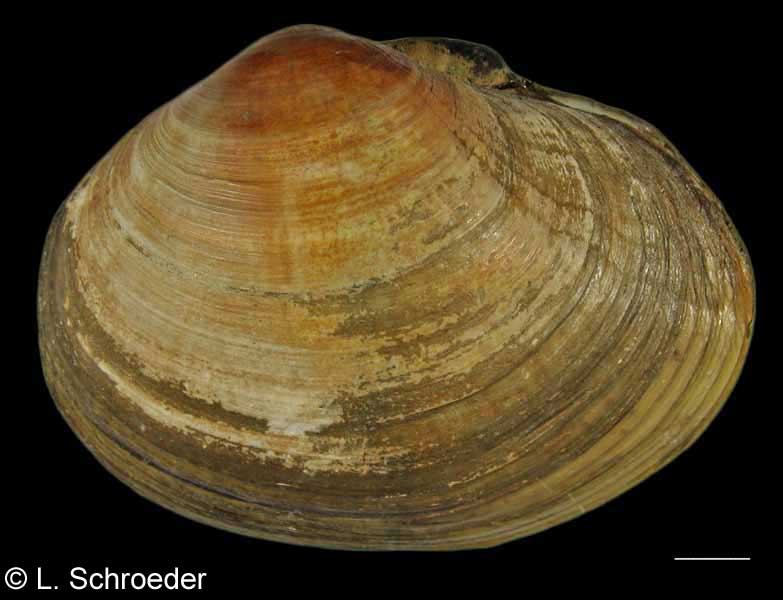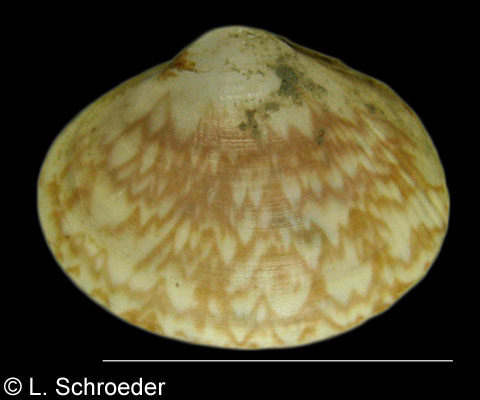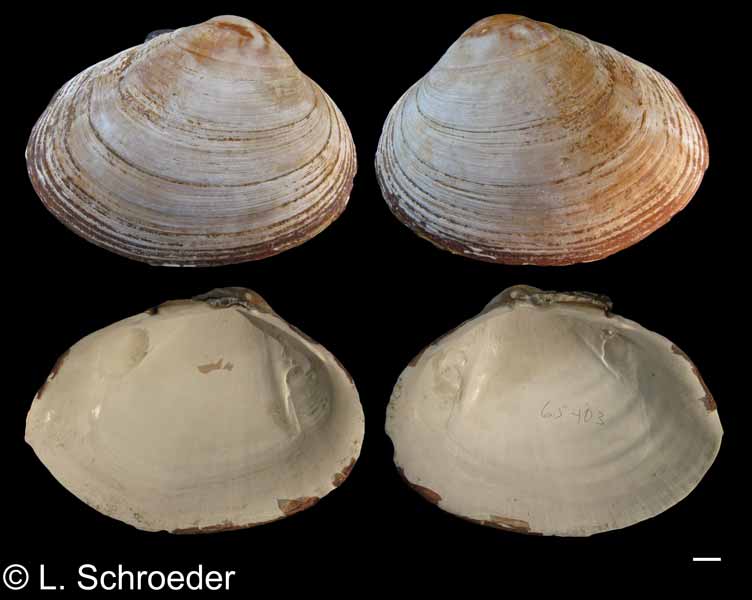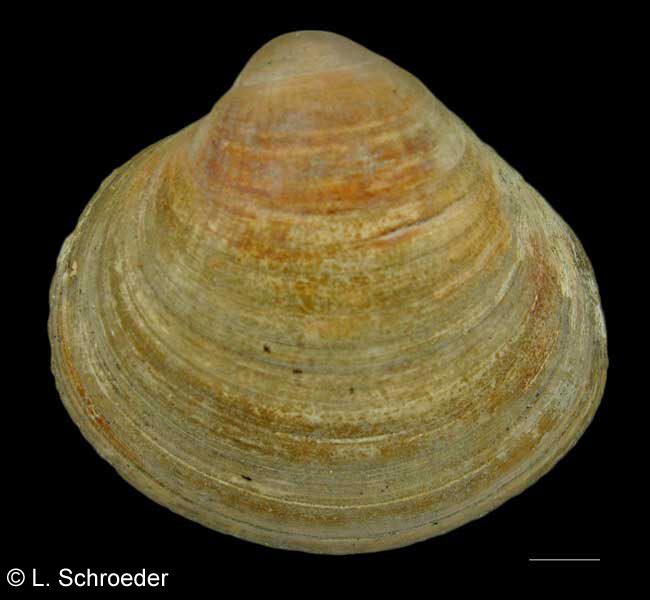Click on photo to enlarge. Scale line in photo equals 1cm unless otherwise specified.
* Species which are commonly encountered on the beach.
 San Juan Islands, WA
San Juan Islands, WA
Keenocardium blandum
(Gould, 1850)
Low-Rib Cockle
subtidal, 20-80m size to 5cm
central California to northern Alaska
The shell is yellowish to dark brown and
overall shell shape can be variable. The
sculpture consists of low ribs with
generally narrow interspaces. The
inner margin is shallowly crenulate.
(synonym - Clinocardium blandum, Clinocardium fucanum)
Bivalves
Family Cardiidae
Clinocardium nuttallii (Conrad, 1837)
Nuttall's Cockle or Basket Cockle *
intertidal
to 200m size to 14.6cm
southern California to
northern Alaska and northern Japan to Kamtchatka
This is very common intertidally and
easy to find. It lives just barely under the surface of the sand and is
readily exposed at low tide. The shell is yellowish-gray
to brown. It is often light in color with orange-brown speckles
and streaks when young and darkens with age. The ribs are strong and
rounded and the inner margin is deeply crenulate. The animal
exhibits a very strong escape response to sea stars and moon snails.
It can protrude it's large foot and flip itself along the sand.
 Port Angeles, WA, subtidal
Port Angeles, WA, subtidal
Keenaea centifilosa (Carpenter, 1864)
Hundred-Line Cockle
subtidal, 30-150m northern Mexico to southern Alaska size to 25mm
This shell has a defined posterior slope with cancellate sculpture. It is separated from
the rest of the shell by a raised rib. The remainder of the shell is covered in fine,
flat riblets. The interior margin is lightly crenulate. It had once been grouped
under the Asian species, Cardium modestum, but this species is now considered distinct.
 Catalina Island, CA
Catalina Island, CA
This page last revised: 5-25-2019
 Comparison of blandum and ciliatum
Comparison of blandum and ciliatumThese two species can easily be
confused, especially in young
specimens. The shapes of the shells
can sometimes be identical. The blandum
has a thinner, more delicate shell and
a much less pronounced crenulate
margin. The ciliatum is usually thicker and
more inflated, with larger teeth at the hinge.
The pictured shells show their typical
appearance in Washington and southern BC. Until recently they were in the same genus.
 San Juan Islands, WA
San Juan Islands, WA
Ciliatocardium ciliatum (Fabricius, 1780)Hairy Cocklesubtidal, 10-150m size to 8.5cmnorthern Washington to northern Alaskaand across to Siberia; circumpolar
The shell is brown with a thick
periostracum. The ribs are triangular with
wide interspaces. The inner margin is
crenulate.
(synonym - Clinocardium ciliatum, Cardium islandicum)













